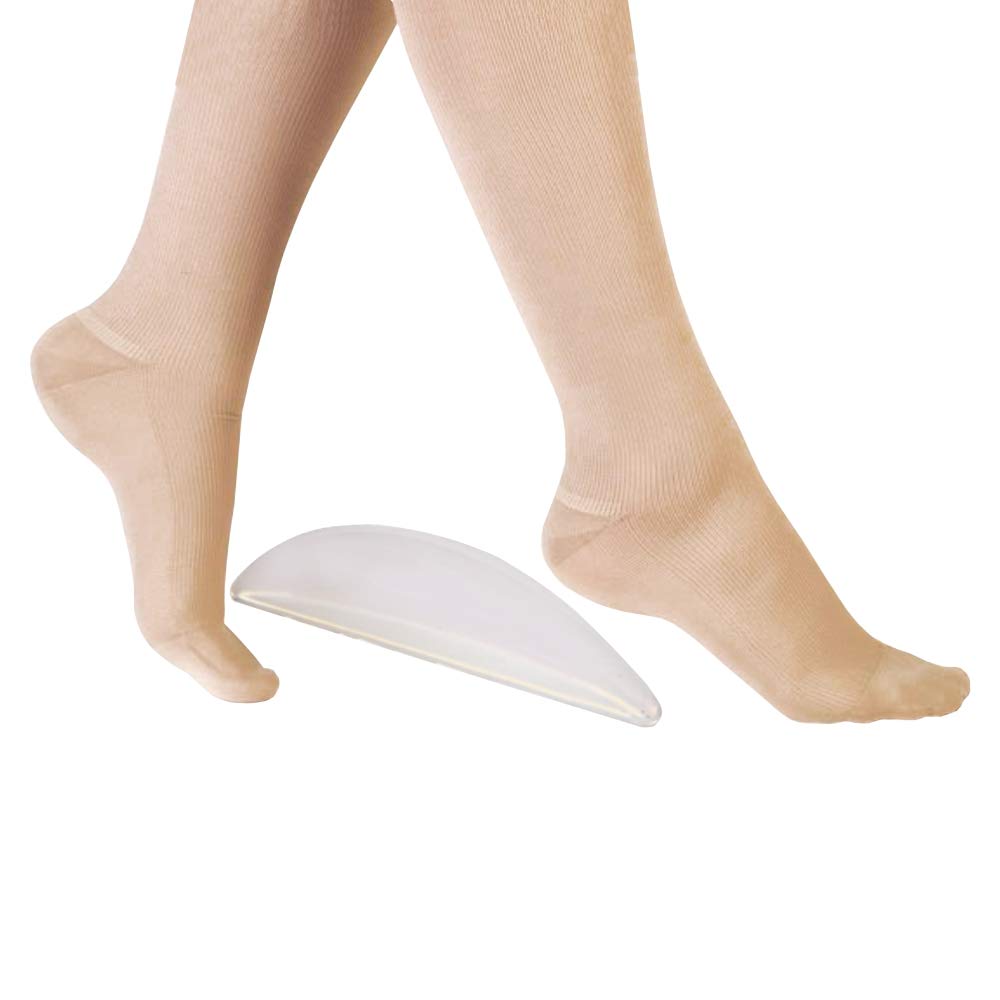Discover how “Walking Tall: Unlocking the Benefits of Arch Support” can revolutionize your foot health and overall well-being. Dive into our detailed guide for insights and practical tips.
Comprehensive Outline for the Article
| Heading | Subheading |
|---|---|
| Introduction: Embracing Arch Support | – Journey to Better Foot Health |
| The Science Behind Arch Support | – Anatomy of the Foot |
| – Importance of Proper Arch Support | |
| Walking Tall: Fundamentals of Arch Support | – Types of Arch Supports |
| – Custom vs. Pre-made Supports | |
| Advantages of Using Arch Support | – Enhanced Comfort and Stability |
| – Prevention of Foot Disorders | |
| Incorporating Arch Support into Daily Life | – Selecting the Right Footwear |
| – Tips for First-Time Users | |
| Personal Testimonies: Transformative Experiences | – Real-life Success Stories |
| Walking Tall: Unlocking the Benefits of Arch Support | – Comprehensive Benefits Overview |
| Challenges and Solutions | – Common Issues and Resolutions |
| – Professional Advice for Overcoming Challenges | |
| Innovative Arch Support Technologies | – Cutting-edge Developments in Footwear |
| – Future of Arch Support | |
| Walking Tall: A Step Towards Overall Wellness | – Link Between Foot Health and General Well-being |
| – Incorporating Arch Support in Holistic Health Practices | |
| The Economic Aspect | – Cost-Effectiveness of Arch Support |
| – Investment in Long-term Health | |
| FAQ Section | – Addressing Common Queries |
Introduction: Embracing Arch Support
For many, the journey to better foot health begins with understanding the role of arch support. Walking Tall: Unlocking the Benefits of Arch Support not only addresses foot discomfort but also enhances overall wellness. This comprehensive guide will explore the myriad benefits of proper arch support, offering valuable insights for anyone looking to improve their foot health.
The Science Behind Arch Support
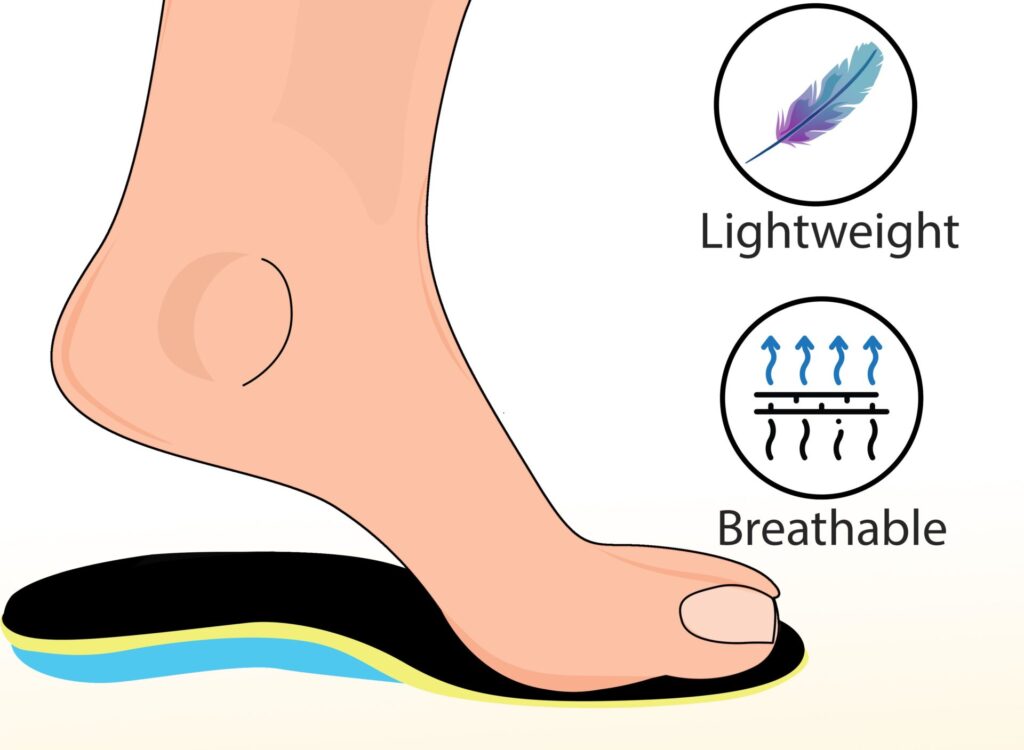
Anatomy of the Foot
The human foot, a complex structure of bones, muscles, and ligaments, plays a crucial role in our mobility. Understanding its anatomy is key to appreciating the importance of arch support.
Importance of Proper Arch Support
Arch support is vital for maintaining the foot’s natural alignment, distributing weight evenly, and reducing strain. It’s a cornerstone in preventing common foot ailments and ensuring comfortable movement.
Walking Tall: Fundamentals of Arch Support
Types of Arch Supports
When it comes to enhancing foot health, understanding the various types of arch supports is crucial. These specialized devices are designed to provide support to the arches of the feet, playing a significant role in maintaining proper foot alignment and comfort. Here, we explore the different types of arch supports available, each catering to specific needs and conditions.
1. Standard Insoles
Standard insoles, often found in everyday footwear, offer basic arch support. While they provide a level of comfort, they are typically generic and not tailored to specific foot shapes or conditions. These insoles can be a good starting point for individuals with mild discomfort or those who spend long hours on their feet.
2. Custom Orthotics
Custom orthotics are personalized to fit the unique contours of an individual’s feet. Made after a thorough evaluation of one’s foot structure, gait, and specific health needs, these orthotics are highly effective in addressing various foot-related issues. They are particularly beneficial for individuals with specific medical conditions like diabetes, plantar fasciitis, or flat feet.
3. Cushioned Arch Supports
These are designed for people who require additional padding, especially those with high arches or those who experience pain due to lack of natural cushioning. Cushioned arch supports help absorb shock and reduce pressure on the feet during activities like walking or running.
4. Rigid Arch Supports
Rigid arch supports are ideal for individuals with significant foot problems, such as severe overpronation or flat feet. These supports are made from firm materials and are designed to control abnormal foot motion. They also aid in providing stability to the lower limb, thereby reducing strain on the knees, hips, and lower back.
5. Semi-Rigid Arch Supports
Semi-rigid arch supports offer a balance between cushioning and support. They are beneficial for athletes or individuals who engage in high-impact sports, as they provide flexibility while still maintaining proper foot alignment. These supports often combine layers of softer materials with rigid supports.
6. Heat-Moldable Arch Supports
Heat-moldable arch supports are a versatile option that can be customized at home. These insoles become pliable when heated and mold to the shape of the foot as they cool down. They offer a semi-custom fit, which is a cost-effective solution for those seeking tailored support without the expense of fully custom orthotics.
7. Gel Arch Supports
Gel arch supports provide a softer, cushion-like feel and are ideal for individuals who require gentle support and shock absorption. These are particularly popular among those with sensitive feet or those recovering from foot surgery.
8. Adjustable Arch Supports
Adjustable arch supports come with removable components, allowing users to modify the level of support according to their comfort and needs. This flexibility makes them suitable for a wide range of users, especially those who are still exploring the right amount of support for their feet.
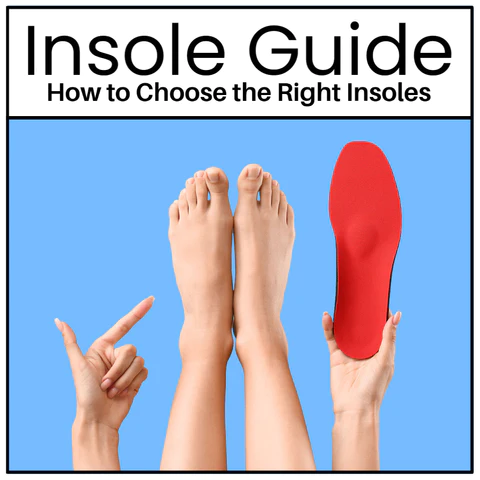
Custom vs. Pre-made Supports
Custom Orthotics:
- Tailored Fit: Custom orthotics are specifically designed to fit the unique contours of your feet. They are crafted based on a detailed assessment of your foot structure, gait, and specific health needs, ensuring a perfect fit.
- Targeted Support: These supports are ideal for addressing specific medical conditions such as plantar fasciitis, diabetes-related foot problems, or severe overpronation. They provide targeted support where it’s needed most, based on your foot’s unique biomechanics.
- Long-Term Solution: Although more expensive upfront, custom orthotics are typically durable and can be a long-term solution to foot problems. They are often made with high-quality materials that withstand daily wear and tear.
- Professional Consultation: Getting custom orthotics usually involves consulting with a podiatrist or foot specialist. This professional assessment ensures that your foot concerns are comprehensively addressed.
Pre-made Supports:
- Immediate Availability: Pre-made supports are readily available at most pharmacies, shoe stores, or online. This convenience means you can start benefiting from them almost immediately.
- Cost-Effective: These supports are generally more affordable than custom-made options. They are a good choice for those on a budget or those who require arch support for less severe or temporary foot issues.
- Variety of Options: There’s a wide range of pre-made arch supports available, each designed for different foot types and levels of support. This variety allows you to experiment with different styles to find one that suits your comfort and support needs.
- Ease of Use: Pre-made supports can be easily transferred between different pairs of shoes, making them a flexible option for those who want to use them across various footwear.
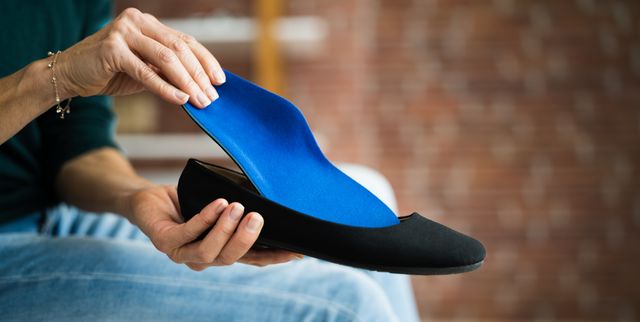
Making the Choice:
Choosing between custom and pre-made arch supports depends on several factors:
- Severity of Foot Issues: If you have significant foot problems or a specific medical condition, custom orthotics may be the better option. For mild discomfort or general support, pre-made supports might suffice.
- Budget Considerations: Custom orthotics are more of an investment. If cost is a concern, starting with pre-made supports can be a good way to gauge what level of support you need before possibly investing in custom orthotics.
- Lifestyle Needs: Athletes or those with an active lifestyle might prefer the tailored support of custom orthotics, while occasional users may find pre-made supports adequate.
- Trial and Error: Sometimes, finding the right support requires experimentation. You might start with pre-made supports and later switch to custom orthotics based on your experience.
Advantages of Using Arch Support
Enhanced Comfort and Stability
Enhanced Comfort:
- Reduced Foot Pain: Arch supports are designed to distribute pressure more evenly across the foot, reducing the strain on any single point. This can alleviate pain in the feet, especially for those suffering from conditions like plantar fasciitis or flat feet.
- Improved Fit of Footwear: With the right arch support, your shoes can fit more comfortably. Supports fill the gap under the arches, preventing the foot from sliding inside the shoe and reducing friction and blisters.
- Shock Absorption: Many arch supports are crafted with materials that absorb impact. This is particularly beneficial when walking on hard surfaces or during activities that put extra stress on the feet, like running or hiking.
- Long-term Relief: Continuous use of arch supports can provide long-term relief from chronic foot discomfort. By addressing the root cause of pain, such as misalignment or improper weight distribution, they help in maintaining foot health in the long run.
Enhanced Stability:
- Improved Balance and Alignment: Proper arch support ensures that the foot is aligned correctly with the ankle, knee, and hip. This alignment is crucial for balance and can prevent falls, particularly in older adults or those with balance issues.
- Support During Movement: Arch supports stabilize the foot during dynamic movements, making them essential for athletes or anyone engaging in physical activities. They help in maintaining proper foot positioning, which is vital for performance and injury prevention.
- Prevention of Overpronation: Overpronation, where the foot rolls inward excessively, can lead to various issues like ankle strain, shin splints, and knee pain. Arch supports help in controlling overpronation, thus enhancing stability and preventing related injuries.
- Beneficial for Various Activities: Whether it’s for daily use, sports, or specific occupations that require prolonged standing, arch supports can significantly improve stability, making these activities more comfortable and safer.
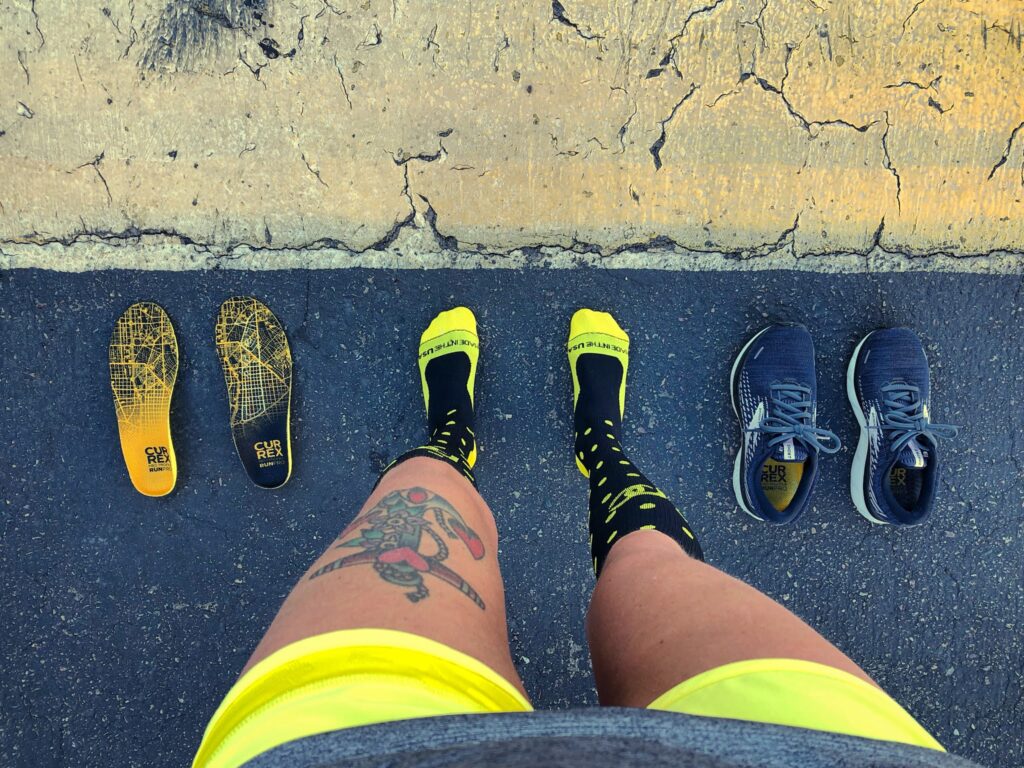
Common Foot Disorders Prevented by Arch Supports
- Plantar Fasciitis: This condition, characterized by pain in the heel and bottom of the foot, is often caused by excessive strain on the plantar fascia ligament. Arch supports help distribute pressure more evenly across the foot, reducing the strain on this ligament and preventing plantar fasciitis.
- Flat Feet (Fallen Arches): Flat feet can lead to pain and discomfort due to the lack of natural arch support. By providing artificial arch support, these devices help in compensating for the flatness, thus alleviating associated pain and discomfort.
- Overpronation: Overpronation, where the foot rolls inward excessively during walking or running, can lead to various issues like ankle strain and knee pain. Arch supports help in maintaining proper foot alignment, thereby preventing overpronation and its related problems.
- Bunions and Hammertoes: These conditions can be exacerbated by improper footwear and poor foot alignment. Arch supports can help in relieving pressure on the toes and sides of the feet, thus preventing the worsening of bunions and hammertoes.
- Shin Splints: Often experienced by runners and athletes, shin splints can be due to improper foot alignment and lack of support. Arch supports can reduce the stress on the lower leg by ensuring proper foot mechanics during activities.
How Arch Supports Aid in Prevention
- Correcting Foot Alignment: By ensuring proper alignment of the foot, arch supports can prevent the strain on muscles, ligaments, and joints, thus reducing the risk of many foot disorders.
- Even Distribution of Pressure: Arch supports help in evenly distributing body weight across the foot, reducing pressure points and the risk of conditions like corns, calluses, and nerve pain.
- Improving Gait and Posture: Proper foot support can lead to improvements in overall posture and walking patterns. This can have a cascading effect on reducing the strain not just on the feet but also on the knees, hips, and lower back.
- Enhancing Footwear Functionality: By improving the fit and function of footwear, arch supports can prevent disorders that arise from ill-fitting shoes, such as blisters and toe deformities.
- Cushioning and Support: Especially for those with high-impact lifestyles or specific medical conditions, the cushioning and support provided by arch supports can be crucial in preventing foot injuries and disorders.

Incorporating Atlas Arch Support into Daily Life
Integrating Atlas arch supports into your daily routine is a key step towards improving foot health and overall comfort. These supports, known for their quality and effectiveness, can be seamlessly included in various aspects of your daily life. The goal is to ensure that your feet are consistently supported, whether you’re at work, engaging in physical activities, or simply going about your day.
Selecting the Right Footwear
- Compatibility with Atlas Arch Supports: Choose shoes that can comfortably accommodate the Atlas arch supports. Look for footwear with removable insoles or enough room to ensure a comfortable fit without crowding your feet.
- Adapting to Different Styles: Ensure that your footwear collection, from formal shoes to casual sneakers, is compatible with arch supports. This way, you can enjoy consistent support regardless of your attire.
- Balancing Style and Comfort: While aesthetics are important, prioritize footwear that offers the right balance of style and support. Atlas arch supports can maximize their benefits only when paired with suitable shoes.
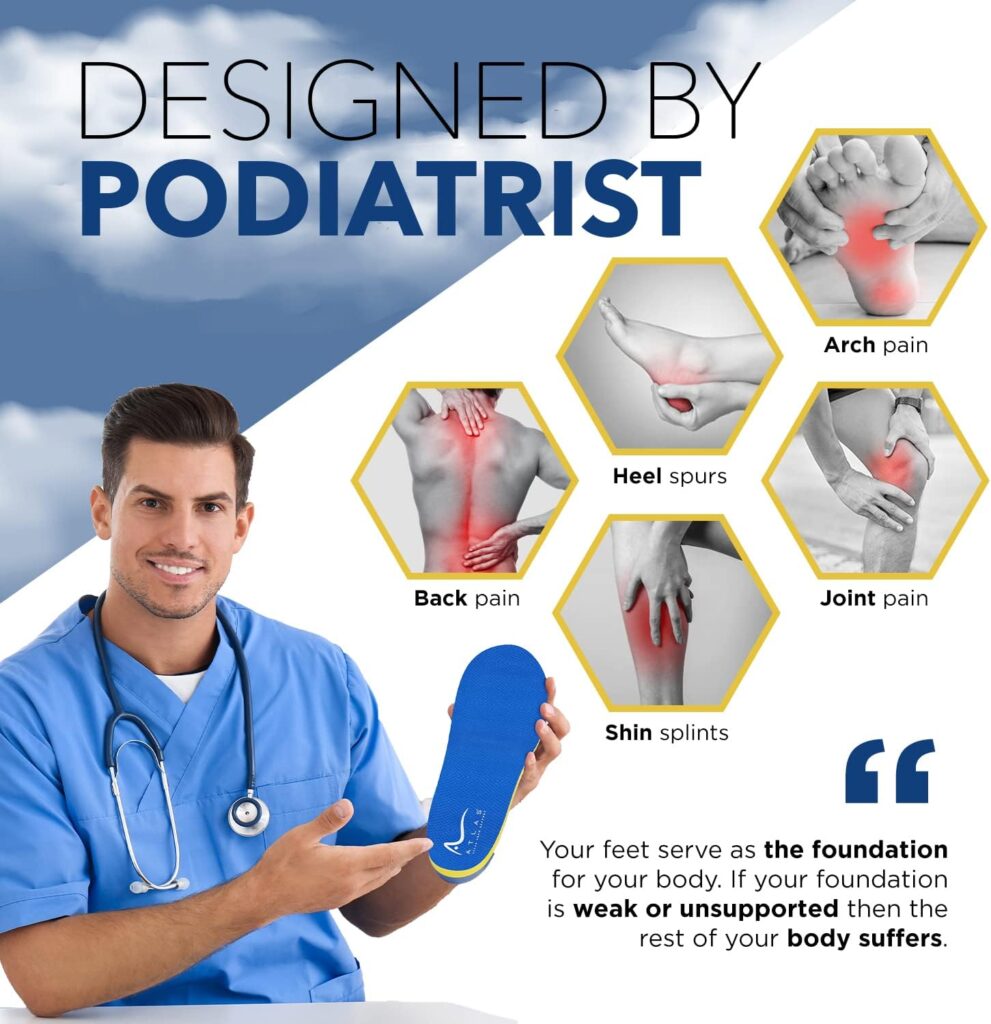
Ease of Integration for First-Time Users
- Gradual Introduction: Start by wearing the Atlas arch supports for a few hours each day, gradually increasing the time as your feet adapt to the additional support.
- Monitoring Foot Response: Be attentive to how your feet respond to the new supports. Some initial adjustment is normal, but ongoing discomfort may require consultation or adjustment.
- Seeking Professional Advice: For specific foot conditions, or if you’re unsure about the right type of Atlas arch support, it’s wise to consult a podiatrist or foot care expert for personalized advice.
Daily Activity Integration
- Routine Use: Incorporate Atlas arch supports into your daily footwear, especially if your day involves extensive standing or walking. They can significantly alleviate foot fatigue and discomfort.
- Active Lifestyle Compatibility: For those active in sports or regular exercise, Atlas arch supports can offer the necessary stability and support, potentially enhancing performance and reducing injury risks.
- Special Occasions: Utilize your arch supports during events or occasions that require prolonged standing or walking, preventing foot fatigue and discomfort.
Maintaining Arch Supports:
- Regular Cleaning: Maintain your Atlas arch supports by keeping them clean and odor-free, following any specific care instructions provided by the manufacturer.
- Timely Replacement: Be mindful of the wear and tear on your arch supports, replacing them as needed to ensure continued effectiveness.
- Multiple Pairs Strategy: Consider having multiple pairs of Atlas arch supports for various shoes, saving time and ensuring optimal fit and support in each pair.
By integrating Atlas arch supports into your daily life, you’re making a proactive choice towards better foot health and comfort. Through careful selection of compatible footwear, a gradual introduction to the supports, and proper maintenance, you can fully enjoy the benefits they offer, leading to more comfortable and healthier feet in your daily activities.
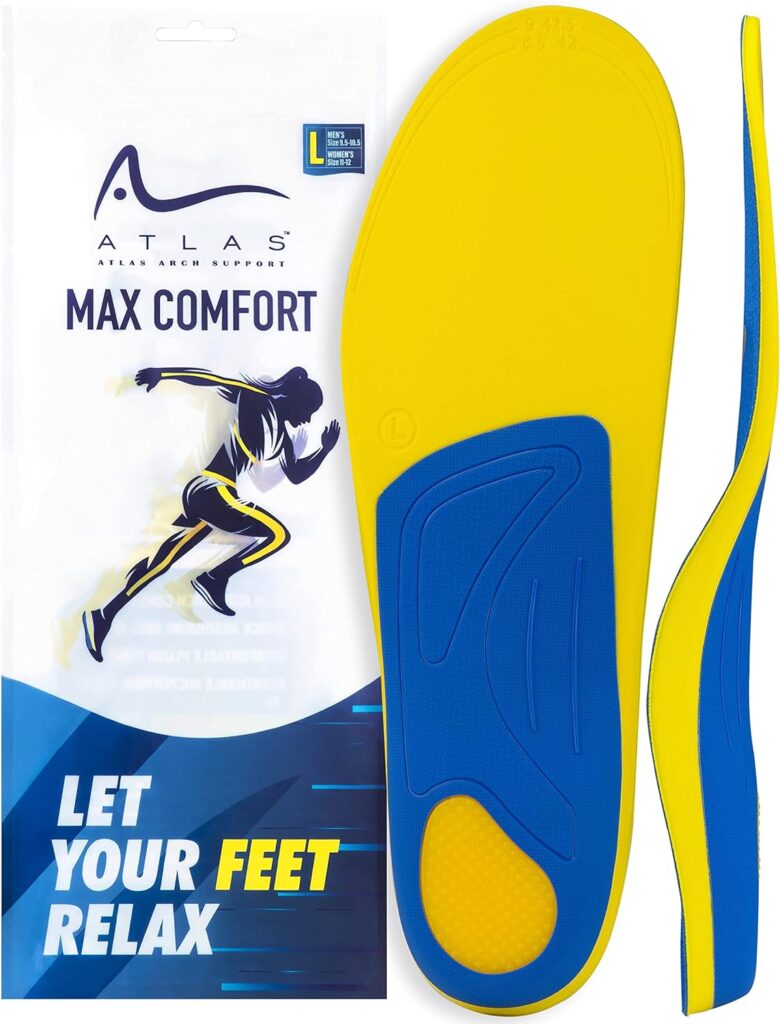
Personal Testimonies: Transformative Experiences
The impact of proper arch support on individuals’ lives can be profound and transformative. Real-life success stories offer inspiring insights into how the right foot care, including the use of arch supports, can lead to significant improvements in comfort, mobility, and overall quality of life. Here are a few examples that highlight these positive changes.
Story 1: The Marathon Runner
Sarah, a passionate marathon runner, struggled with persistent heel pain and shin splints, which often left her sidelined and frustrated. After consulting with a podiatrist, she started using custom arch supports specifically designed for her foot structure and running style. The result was remarkable. Not only did her pain diminish, but she also noticed improved running efficiency. Sarah went on to complete her next marathon with a personal best time, attributing much of her success to the support and stability provided by her arch supports.
Story 2: The Busy Teacher
John, a middle school teacher, spent long hours on his feet every day, leading to chronic foot fatigue and lower back pain. After a colleague’s recommendation, he decided to try pre-made arch supports in his shoes. The difference was noticeable within the first week. John experienced less foot soreness at the end of the day and found that he could focus better on his teaching without the distraction of discomfort. His arch supports became an essential part of his daily wardrobe, making his demanding job more manageable and enjoyable.
Story 3: The Senior Citizen with Renewed Mobility
Margaret, a 70-year-old retiree, faced difficulties in walking due to flat feet and arthritis. Her limited mobility was affecting her independence and quality of life. Upon the suggestion of her physician, Margaret began using semi-rigid arch supports. The supports provided the necessary balance and reduced the pain associated with walking. Gradually, she regained much of her mobility, allowing her to participate in daily walks and community activities that she previously found too challenging.
Story 4: The Young Professional
Alex, a young professional in a corporate setting, had to wear formal shoes daily, which left his feet aching by midday. After trying gel arch supports, designed to offer cushioning and comfort in dress shoes, Alex found relief from the discomfort. He was able to stay more productive and engaged at work, attributing this change to the enhanced comfort provided by his new arch supports.
Story 5: The Avid Hiker
Emily, an avid hiker, often experienced ankle instability and soreness after her hiking trips. After incorporating heat-moldable arch supports into her hiking boots, she noticed a significant improvement in her stability and endurance on the trails. The supports helped in aligning her feet properly, reducing strain on her ankles and knees. This adjustment allowed Emily to tackle more challenging hikes and enjoy her hobby to the fullest.
These stories showcase the diverse benefits of arch supports across different lifestyles and needs. Whether for athletic pursuits, professional demands, or everyday comfort, the right arch support can make a substantial difference, bringing relief, enhanced performance, and an overall improvement in life quality.
Walking Tall: Unlocking the Benefits of Arch Support
“Walking Tall: Unlocking the Benefits of Arch Support” is more than just a phrase; it embodies the journey towards improved foot health and overall well-being. Arch supports play a crucial role in this journey, offering numerous benefits that extend far beyond mere foot comfort. This comprehensive overview highlights how the right arch support can be a game-changer in maintaining an active, pain-free lifestyle.
Enhanced Comfort and Pain Relief
The primary benefit of arch supports is the enhanced comfort they provide. They help distribute body weight evenly across the feet, reducing the pressure on pain points. This can lead to significant pain relief, particularly for those suffering from conditions like plantar fasciitis, flat feet, or high arches. The right arch support ensures that the foot’s natural curvature is supported, minimizing discomfort during prolonged periods of standing or walking.
Improved Posture and Alignment
Arch supports contribute to better posture by promoting proper foot alignment. This alignment is crucial as it affects the entire skeletal structure. Proper foot positioning can alleviate stress on the knees, hips, and lower back, leading to overall improvements in posture and reducing the risk of related musculoskeletal issues.
Increased Stability and Balance
Proper arch support enhances stability and balance, making it an essential aspect for athletes, the elderly, and anyone looking for improved performance in physical activities. By preventing overpronation (where the foot rolls inward excessively) or supination (where the foot rolls outward), arch supports help maintain a stable and balanced gait, which is vital for preventing falls and injuries.
Reduced Foot Fatigue
For individuals who spend long hours on their feet, whether due to professional requirements or lifestyle choices, foot fatigue can be a common issue. Arch supports help mitigate this fatigue by providing cushioning and support, enabling longer periods of standing or walking without discomfort.
Prevention of Future Foot Problems
Regular use of arch supports can play a preventive role in foot health. By providing proper support from an early age or at the onset of foot discomfort, arch supports can prevent the progression of foot disorders and the development of more serious complications.
Enhanced Athletic Performance
Athletes often find that arch supports can enhance their performance. By ensuring proper foot alignment and reducing the risk of injuries, these supports allow athletes to focus on their performance without being hindered by foot discomfort or instability.
Suitable for Everyone
Arch supports are not just for those with existing foot problems. They are beneficial for people of all ages and lifestyles, from children to the elderly, athletes to office workers. By incorporating arch supports into their footwear, individuals can proactively contribute to their foot health and overall well-being.
Challenges and Solutions
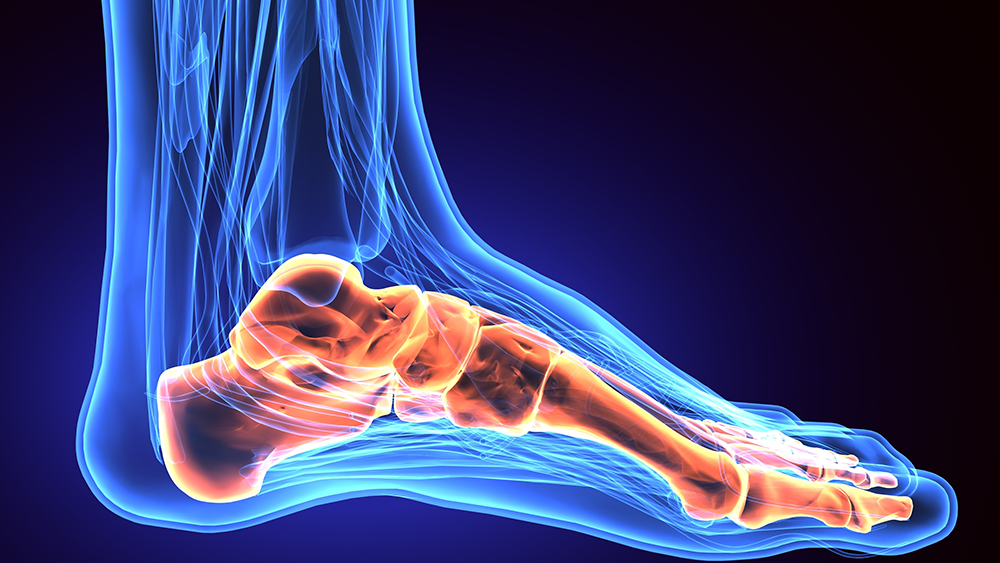
Challenge 1: Initial Discomfort
- Solution: Start with gradual use. Wear the arch supports for a few hours each day, gradually increasing the duration. This allows your feet to adjust to the new support structure.
- Solution: Ensure proper fit. Sometimes, discomfort arises from ill-fitting arch supports. Make sure that they fit well within your shoes and that your feet have enough room to move comfortably.
Challenge 2: Finding the Right Type of Support
- Solution: Consult a professional. A podiatrist or foot specialist can assess your specific needs and recommend the most suitable type of arch support for your feet.
- Solution: Experiment with different types. Try various styles and materials to find the one that provides the most comfort and support for your particular condition.
Challenge 3: Adjusting to Arch Supports in Different Shoes
- Solution: Use removable arch supports. Choose supports that can be easily transferred between different pairs of shoes to maintain consistent support regardless of footwear.
- Solution: Invest in multiple pairs. Having a set of arch supports for each frequently worn pair of shoes can simplify the process and ensure you always have the support you need.
Challenge 4: Maintenance and Longevity of Arch Supports
- Solution: Follow care instructions. Regularly clean your arch supports and follow any specific maintenance instructions to prolong their lifespan.
- Solution: Monitor for wear and tear. Regularly check your arch supports for signs of wear and replace them when necessary to ensure they continue to provide optimal support.
Challenge 5: Cost and Accessibility
- Solution: Explore insurance options. Some health insurance plans may cover part of the cost of custom orthotics. Check with your provider for potential benefits.
- Solution: Consider pre-made options. If custom orthotics are not financially feasible, high-quality pre-made arch supports can also provide significant benefits and are generally more affordable.
Challenge 6: Aesthetic Concerns
- Solution: Look for low-profile designs. Many arch supports are designed to be discreet and can fit seamlessly into a variety of shoe styles without being noticeable.
- Solution: Balance needs and preferences. While aesthetics are important, prioritize the health and comfort of your feet, as the right support can greatly improve your quality of life.
Innovative Arch Support Technologies
3D Printing and Customization
- Technology Overview: 3D printing technology has revolutionized the creation of custom orthotics. By using precise foot measurements and biomechanical data, 3D printers can produce arch supports that perfectly fit the contours of an individual’s foot.
- Benefits: This customization ensures maximum comfort and effectiveness. It also allows for rapid production and easy modification of the orthotic design based on specific needs or changes in foot condition.
Advanced Materials
- Technology Overview: The use of new, advanced materials in arch supports enhances their functionality. Memory foam, gel-infused materials, and breathable fabrics offer superior cushioning, shock absorption, and comfort.
- Benefits: These materials adapt to the shape of the foot, providing tailored support and alleviating pressure points. They also improve the durability and longevity of the supports.
Smart Arch Supports
- Technology Overview: Smart arch supports are equipped with sensors that monitor foot pressure, gait, and overall foot health. This data can be synced to smartphones or computers for analysis.
- Benefits: They provide valuable insights into foot health, helping to identify potential issues early. This technology is particularly beneficial for athletes and individuals undergoing rehabilitation.
Ergonomic Designs
- Technology Overview: Ergonomic design in arch supports focuses on aligning the foot in the most natural and efficient position. This approach takes into account the dynamic nature of foot movement and the varying demands of different activities.
- Benefits: These designs can reduce the risk of injury, enhance athletic performance, and provide greater comfort during everyday activities.
Sustainability
- Technology Overview: The growing focus on sustainability has led to the development of eco-friendly arch supports, made from recycled or biodegradable materials.
- Benefits: These environmentally conscious options provide a sustainable choice for consumers, reducing the carbon footprint without compromising on quality or effectiveness.
Temperature Regulation
- Technology Overview: Temperature-regulating technologies in arch supports help in maintaining an optimal foot environment, preventing overheating and excessive sweating.
- Benefits: This technology enhances comfort, especially in extreme weather conditions, and can prevent issues like blisters and fungal infections.
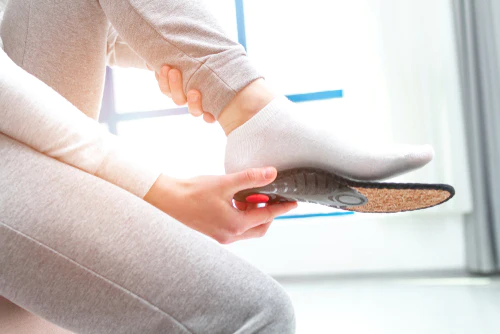
Walking Tall: A Step Towards Overall Wellness
Link Between Foot Health and General Well-being
- Foundation of Movement: Our feet are the foundation of almost every movement we make. Proper foot care, including the use of arch supports, ensures that this foundation is strong, stable, and healthy. This, in turn, influences our overall physical capabilities and quality of life.
- Impact on Body Mechanics: The alignment of our feet affects our entire skeletal structure. Misalignments can lead to a cascade of issues, including knee pain, hip discomfort, and lower back pain. By supporting the arches of the feet, we can promote better alignment throughout the body.
- Enhanced Mobility: With the right arch support, individuals can experience enhanced mobility. This is particularly important for seniors, athletes, or those with physical jobs, as it directly impacts their ability to perform daily activities comfortably.
Incorporating Arch Support in Holistic Health Practices
- Part of a Comprehensive Health Strategy: Arch supports should be viewed as one component of a broader health and wellness strategy. This includes regular exercise, a balanced diet, and proper rest, all of which contribute to overall health.
- Stress Reduction and Mental Well-being: Comfortable feet can also positively affect mental health. Reducing foot pain and discomfort can lower stress levels and improve mood, contributing to better mental well-being.
- Preventive Health Care: Regularly using arch supports can be a form of preventive health care. By addressing potential foot issues before they develop into more serious problems, we can avoid complications that might affect our general health.
Arch Supports as a Symbol of Self-Care
- Investing in Quality Footwear and Support: Taking the time to select the right footwear and arch supports is an investment in oneself. It demonstrates a commitment to personal health and well-being.
- Regular Foot Care Routine: Incorporating foot care into a daily routine, which includes the use of arch supports, signifies a proactive approach to maintaining health and preventing future issues.
In conclusion, “Walking Tall: A Step Towards Overall Wellness” reflects the essential role of foot health in our overall physical and mental well-being. Arch supports are more than just a remedy for foot issues; they are a key element in a comprehensive approach to health that fosters improved mobility, alignment, and a greater sense of overall wellness. By prioritizing foot health, we take a significant step towards a more balanced and healthy lifestyle.
FAQ Section
- What are the main benefits of using arch supports?
- Arch supports offer several benefits, including improved foot comfort, reduced risk of foot disorders, better alignment of the feet and legs, enhanced balance and stability, and overall improved mobility.
- Can arch supports help with existing foot conditions?
- Yes, arch supports can be beneficial in managing and alleviating symptoms of various foot conditions such as plantar fasciitis, flat feet, and overpronation. They provide the necessary support to the foot arches, reducing strain and discomfort.
- Should I wear arch supports all the time?
- It’s generally a good idea to wear arch supports as much as possible, especially if you spend a lot of time on your feet, engage in physical activities, or have existing foot issues. However, it’s also important to allow your feet some time to adapt to the supports, especially if you’re a first-time user.
- Are custom orthotics better than over-the-counter arch supports?
- Custom orthotics are tailored to your specific foot shape and needs, which can make them more effective for certain conditions. However, over-the-counter arch supports can also be very effective, especially for general support and comfort. The best choice depends on your individual needs and budget.
- Can children and teenagers benefit from arch supports?
- Yes, children and teenagers can benefit from arch supports, especially if they have foot alignment issues, are highly active in sports, or experience foot discomfort. It’s important to choose the right type of support for their growing feet.
- How do I know if I need arch supports?
- Signs that you might benefit from arch supports include frequent foot pain, discomfort while walking or standing, flat feet, high arches, or symptoms of foot misalignment. Consulting with a healthcare professional can provide a definitive answer.
- How long do arch supports typically last?
- The lifespan of arch supports varies depending on the material, how often they are used, and the level of activity. On average, they can last anywhere from six months to a few years. Regularly check your arch supports for signs of wear and replace them as needed.
- Can arch supports improve athletic performance?
- Yes, arch supports can improve athletic performance by enhancing foot stability, reducing the risk of injury, and improving alignment. This can lead to more efficient movement and potentially better athletic performance.
- Are there any side effects to using arch supports?
- Initially, some people may experience mild discomfort as their feet adjust to the arch supports. However, this typically subsides with regular use. If discomfort persists, it’s advisable to consult a professional for guidance.
- Can arch supports be used in any type of shoe?
- Most arch supports are designed to fit in a variety of shoe types, but it’s important to ensure they fit properly in your shoes. Some supports are specifically designed for certain types of footwear, like athletic shoes or dress shoes.
